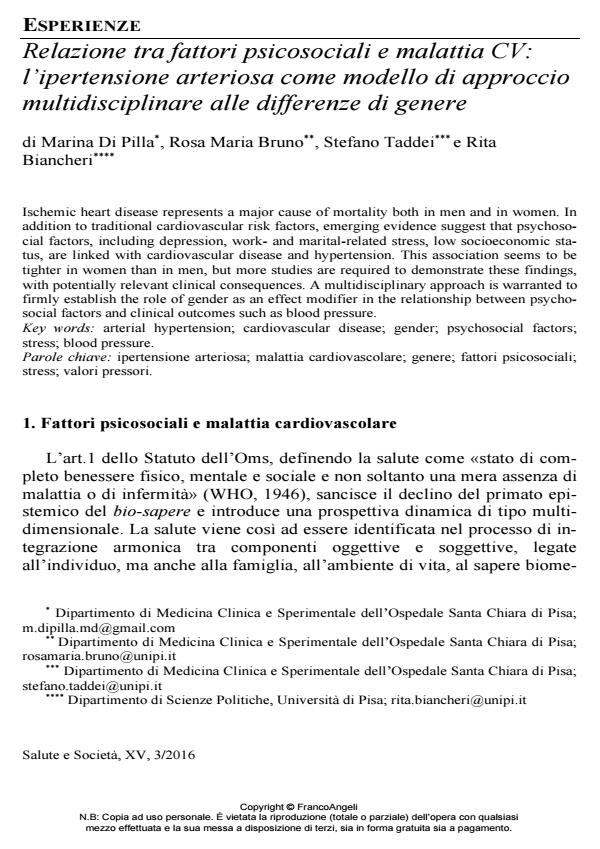Relazione tra fattori psicosociali e malattia CV: l’ipertensione arteriosa come modello di approccio multidisciplinare alle differenze di genere
Titolo Rivista SALUTE E SOCIETÀ
Autori/Curatori Marina Di Pilla, Rosa Maria Bruno, Stefano Taddei, Rita Biancheri
Anno di pubblicazione 2016 Fascicolo 2016/3
Lingua Italiano Numero pagine 9 P. 103-111 Dimensione file 46 KB
DOI 10.3280/SES2016-003008
Il DOI è il codice a barre della proprietà intellettuale: per saperne di più
clicca qui
Qui sotto puoi vedere in anteprima la prima pagina di questo articolo.
Se questo articolo ti interessa, lo puoi acquistare (e scaricare in formato pdf) seguendo le facili indicazioni per acquistare il download credit. Acquista Download Credits per scaricare questo Articolo in formato PDF

FrancoAngeli è membro della Publishers International Linking Association, Inc (PILA)associazione indipendente e non profit per facilitare (attraverso i servizi tecnologici implementati da CrossRef.org) l’accesso degli studiosi ai contenuti digitali nelle pubblicazioni professionali e scientifiche
Ischemic heart disease represents a major cause of mortality both in men and in women. In addition to traditional cardiovascular risk factors, emerging evidence suggest that psychosocial factors, including depression, work- and marital-related stress, low socioeconomic status, are linked with cardiovascular disease and hypertension. This association seems to be tighter in women than in men, but more studies are required to demonstrate these findings, with potentially relevant clinical consequences. A multidisciplinary approach is warranted to firmly establish the role of gender as an effect modifier in the relationship between psychosocial factors and clinical outcomes such as blood pressure.
Parole chiave:Ipertensione arteriosa; malattia cardiovascolare; genere; fattori psicosociali; stress; valori pressori
Marina Di Pilla, Rosa Maria Bruno, Stefano Taddei, Rita Biancheri, Relazione tra fattori psicosociali e malattia CV: l’ipertensione arteriosa come modello di approccio multidisciplinare alle differenze di genere in "SALUTE E SOCIETÀ" 3/2016, pp 103-111, DOI: 10.3280/SES2016-003008